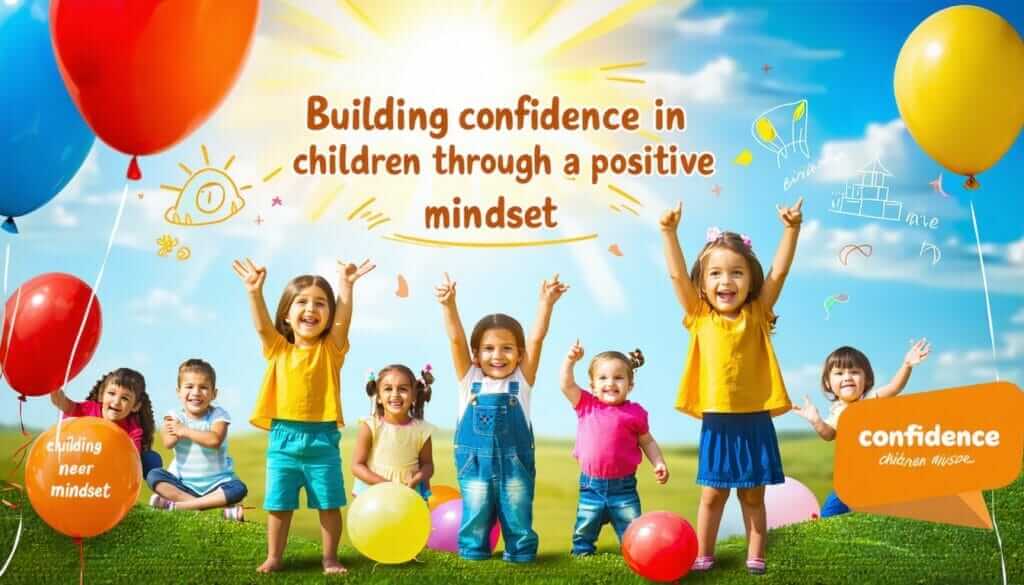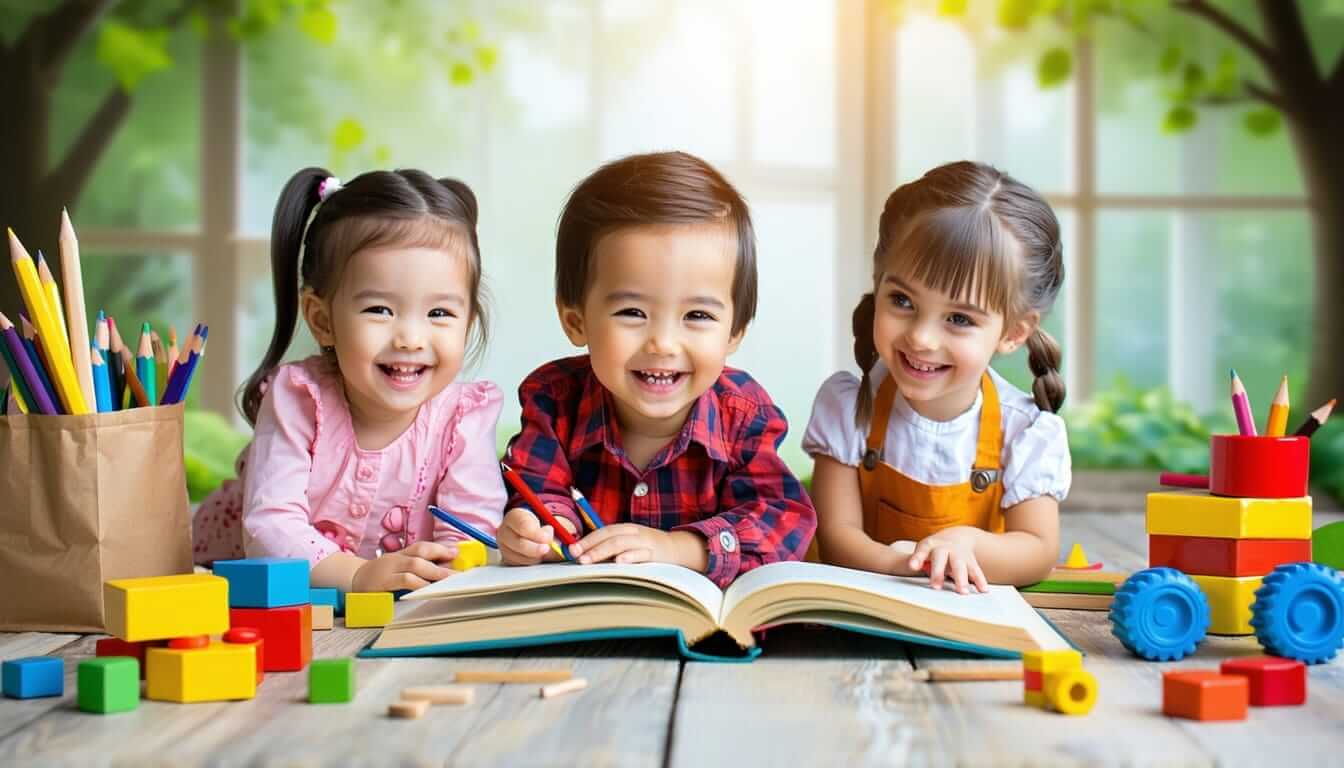Building Confidence in Children
Boosting children’s confidence is like giving them a secret superpower. When they believe in themselves, they’re ready to tackle the messy, fun and sometimes tricky stuff life throws at them. Let’s look at a couple of easy-peasy ways to help your kiddo grow that superhero confidence.
Encouraging Exploration and Effort
Ever seen a kid with a determined glint in their eye as they dive into something new? It’s magic watching them discover what they’re capable of. Trying out different activities is a fantastic way for your little one to stretch their wings and find out they can fly. When kids get the chance to test the waters in various pursuits, they often find strengths they never knew they had—and boy, does it make them stand taller!
Here’s how you can help:
- Mix it Up: Toss in everything from kicking a soccer ball to whipping up some crafty art.
- Chatter About The Efforts: Let ’em know it’s the hustle, not just the trophy, that counts.
- Baby Steps Matter: Tiny goals lead to big high-fives when they smash ’em!
| Activity Type | How It Helps |
|---|---|
| Sports | Gives ’em muscles and mates |
| Arts and Crafts | Sparks creativity and lets feelings fly |
| Playing Instruments | Adds patience and focus to their toolkit |
Peek at more positive thinking activities for children for a dash of inspiration and a sprinkle of giggles.
Embracing Failure as a Learning Opportunity
Mistakes aren’t bad—they’re just funky dance steps on the way to success! Teaching kids that falling flat sometimes is just another way to bounce back stronger is key to wellness and self-assurance. When they trip, they learn to shake off the dust, apply those lessons, and move forward with more grit than ever.
Help your kid roll with life’s punches:
- Swap Failure Stories: Chat about those oopsies of yours, and how you turned them around.
- Dig into the Lessons: After a goof, talk about what they learned and how they’ll do it differently next time.
- Be Their Cheerleader: Make home a cozy corner for expressing their thoughts without judgment.
By mixing these no-fail strategies into everyday life, you’re setting up your children to face the world with a heart full of courage and a head held high. Find even more gems in our piece on developing a growth mindset in kids.
Discovering Passions and Setting Goals
Cheering on kids to explore what they like and aim for achievable goals is vital for nurturing a “Yes I Can!” attitude. It builds their self-belief and sets them up for life’s adventures.
Finding Identity Through Interests
Getting your kid to figure out what lights up their spirit helps shape who they are. When they dive into stuff they love, it boosts their self-worth, giving them the guts to take on life’s curveballs. Kids learn they can power through tough times, flexing their mind muscles along the way. This personal quest is golden for boosting their confidence (Child Mind Institute).
Encourage your child to try a mix of things, like doodling, jamming out on an instrument, dunking some hoops, or tinkering with a science kit. Shine a light on what they do well in these areas. This not only makes them more them, but also strengthens their grit as they tackle new and sometimes wild adventures. You could whip up a simple chart of interests and activities to help them spot what they dig.
| Interest/Activity | Benefits |
|---|---|
| Art | Sparks creativity and lets them express themselves |
| Sports | Shows them discipline and teamwork |
| Music | Boosts emotional growth and focus |
| Science Projects | Fuels curiosity and hones problem-solving skills |
Celebrating Achievements and Efforts
Setting small and big goals helps kids bloom. No matter how teeny the win, celebrating shows them they’re rockstars. High-fiving their efforts is just as important ’cause it teaches them sticking to it is key. When effort is valued, kids get that winning comes from working hard, revving them up to take on new challenges.
To make celebrating even better, try this:
- Showcase their art or projects at home—instant pride boost.
- Give them a shoutout for their hustle without comparing them to others. Cheer for their growth, not their rank.
- Cook up some realistic, bite-sized goals together, and when they hit those, party with a family outing or treat.
Creating an environment where effort gets a round of applause goes miles in building positivity fast. For more ways to foster sunshine and grit, check out our pieces on teaching children optimism and resilience and building a positive attitude in kids.
By nudging your kids to chase their dreams and marking their milestones, you’re planting the seeds of a strong sense of self that’ll stick with them for the long haul.
Demonstrating Unconditional Love and Support
Building a bright outlook in kids takes more than nice words—it’s all about showing them your love knows no bounds. This kind of care supercharges their self-esteem and pads their “I got this!” attitude.
Consistent Positive Reinforcement
Want your kiddo to shine? Make lifting them up a habit. Cheering for their hard work, no matter what, tells them they matter and makes them bold. Helping them see that messing up is just part of getting better makes them understand everyone’s human and that’s okay (Child Mind Institute). This lifts their spirits and arms them with courage to face anything head-on.
| Type of Reinforcement | Example | Impact on Child’s Mindset |
|---|---|---|
| Verbal Praise | “I love how you tried to solve that problem!” | Encourages effort and persistence |
| Rewards | Stickers or a small treat for completing a task | Motivates continued engagement |
| Acknowledgment | Recognizing improvements, e.g., “You did great in your project!” | Builds self-esteem and resilience |
Developing a Growth Mindset
Teaching kids that their efforts matter more than being born smart helps them grow. When kids get those messages, they’re pumped to tackle new tasks, knowing they can always do better. Having this mentality means they’re ready to roll with the punches and not shy away when things get tough.
Here’s how you can sprinkle that growth dust on them:
- Modeling Positive Self-Talk: Show them how to keep it cool and optimistic when life’s got you in a bind. They’ll mimic your reactions and apply them to their own hurdles.
- Encouraging Problem-Solving: Rather than handing out solutions, lead them to puzzle out the answers themselves. Fire away with questions that put them on the thinking track.
- Promoting Learning from Mistakes: Help your kid see that hiccups are learning moments. Teach them that slips aren’t goofs but golden chances to learn and grow (Child Mind Institute).
Stick these strategies in your parenting toolkit, and you’re bound to watch your child’s confidence swell and see them sail smoothly toward a sunny disposition. For more insights, dive into our reads on teaching children optimism and resilience and developing a growth mindset in kids.
Child Development Stages
Grasping how your child grows is super important if you want to help boost their confidence and positivity. From their early days up into those teenage years, your influence can really make a difference in building their self-esteem through loving support and open chats.
Early Years Development Focus
From birth to about three, kids are mini-explorers—learning all about their world with their senses. They’re busy figuring out essential skills like rolling, crawling, and eventually walking. Setting up a cozy, secure playground that sparks their curiosity without going overboard with toys or activities is the way to go. According to the smart folks over at the California Department of Education, keeping their environment lively but not overwhelming does wonders.
Once they hit that four-to-ten sweet spot, kids start getting into planning and are hungry for new experiences and pals. This is prime time for forming habits and showering them with compliments to turbocharge their confidence. You might want to jump into some positive thinking activities for children during your day-to-day hustle to keep things upbeat.
| Age Range | Key Development Focus | Parental Steps |
|---|---|---|
| Birth to 3 years | Discovering the world and learning movement | Safe, fun space; play together with them |
| 4 to 10 years | Figuring out social stuff and future plans | Set routines; shower with praise; chat often |
Fostering Growth in Adolescence
When they hit those teen years, usually between eleven and fourteen, it’s like they’re on a fast-track change ride—physically, mentally, emotionally. They’re looking for some freedom, but still need that parental safety net. Listening to what they say and setting clear, fair boundaries keeps them feeling secure.
How you talk to them now is a big deal. Use positive words and help them see challenges as chances to learn, boosting their grit and confidence. Getting involved in teaching them about optimism and resilience solidifies a “Yes I Can!” mindset, which is pretty powerful. Check out our guide for more: teaching children optimism and resilience.
| Age Range | Growth Focus | Parental Moves |
|---|---|---|
| 11 to 14 years | Growing independent and managing emotions | Be there to listen and support; value their thoughts; create fair rules |
Staying in tune with what they need at different stages means you’re setting them up for a strong, confident future. By helping them stay positive and keeping an open line of communication, you’re playing a big part in their growth. For more insights, dive into resources like promoting a positive mindset in early childhood and positive mindset and building resilience in children.
Positive Mindset Benefits
Helping kids develop a sunny outlook is pretty important for their journey through life. A good mindset builds their confidence and arms them with what they need to tackle life’s ups and downs. Let’s check out how staying optimistic can help with mental toughness and feeling good overall.
Impact on Mental Resilience
Optimism is like a secret weapon for mental toughness—it’s about bouncing back when things don’t go as planned. Kids who see the glass as half full are better at dealing with life’s curveballs. Keeping a positive attitude helps them keep stress and worry in check, leading to a peaceful mind.
Studies back it up: if kids lean towards a bright side, they’re less likely to get stuck with blues or worries—helping them handle life’s twists and turns easier.
| Benefit | Description |
|---|---|
| Mental Resilience | Bouncing back from setbacks and tackling challenges |
| Reduced Stress Levels | Feeling less anxious when things get tough |
| Lower Rates of Depression | Less chance of getting caught in a rut |
| Enhanced Coping Skills | Better at handling whatever life throws their way |
Want more on keeping kids resilient? Check out developing resilience in children through positive mindset.
Physical and Emotional Well-being
Thinking positively isn’t just good for the mind—it helps the body and heart too. A cheerful approach might keep the doctor at bay, lessening blood pressure and boosting heart and immune systems. Kids with a grin are likelier to make healthy choices, keeping them buzzing with energy.
Emotionally, kids with a positive mindset aren’t swept away by storms of feelings. They feel good about themselves, creating a fertile ground for blossoming. Here’s a peek at how positive vibes boost health and emotions.
| Benefit | Impact on Children |
|---|---|
| Improved Physical Health | Lowers heart disease risks and backs healthy choices |
| Faster Recovery from Illness | Kids bounce back quicker after getting sick or hurt |
| Enhanced Emotional Regulation | Keeping emotions in check for better relationships and social skills |
| Increased Self-Esteem | Feeling capable leads to getting involved confidently |
For more ways to sow seeds of positivity and healthy habits, check out our guides on promoting a positive mindset in early childhood and positive mindset and self-esteem in child development.
By nurturing a bright outlook in your kids, you’re putting powerful gears in their hands—boosting their chances to shine, protecting their mental mojo, and making for a more satisfying life.
Parent-Teacher Collaboration
Enhancing Child’s Confidence
Helping kids feel good about themselves involves teamwork between you and your child’s teacher. Joining in on classroom shenanigans? It’s not just fun! It shows your child you’re right there with them. It’s like giving them a double-shot of awesomeness. When you jump in, your kiddo sees it, feels it, and their motivation goes through the roof (Pepperdine University).
When both you and the teacher cheerlead for the same team, your child gets a solid boost. Knowing they’re backed by a strong crew both at home and school, they strut with a bit more swagger, ready to take on the world with a head held high and confidence bubbling over.
Importance of Positive Communication
Keep the convo with the teacher upbeat. It’s like starting off with dessert – naturally sweetens things up! Sharing little victories can pave the way for bigger chats later (Pepperdine University). When parents hear about their child’s wins, they’re more likely to cheer even louder from the sidelines and keep that positive vibe flowing at home. Positive vibes are contagious; they make your home the ultimate spot for young minds to thrive.
Did you know? A cool 36% of teachers felt their bond with parents got better after the lockdown trials and tribulations. This shows we all do better when we’re in this together (Education Support Partnership). By buddying up with the teacher, you create a strong net of support, lifting confidence levels and setting a bright tone for your child.
So, for boosting your child’s self-esteem, remember the buddy system—it’s golden. Take advantage of resources that help strengthen these connections. Learn more about promoting a growth mindset through positive communication to mix these tactics into your everyday game plan.




